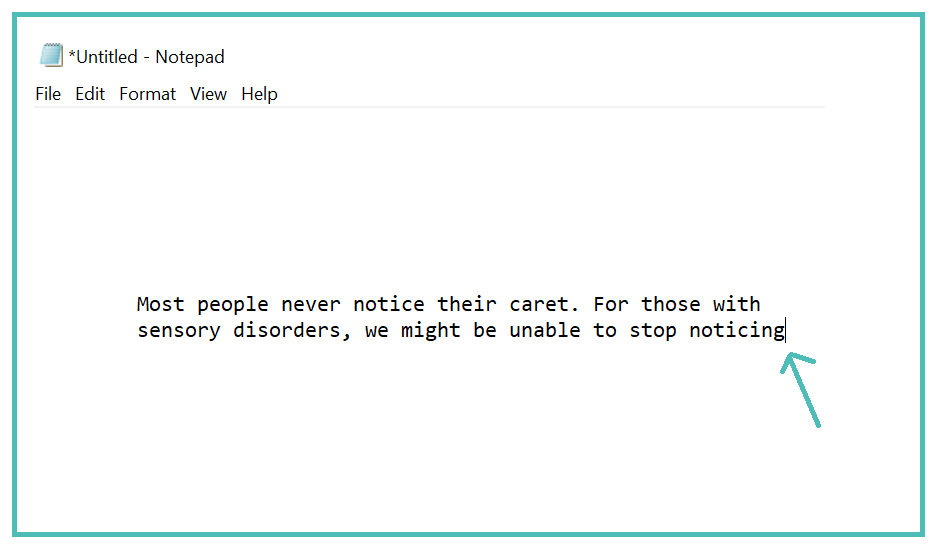
In an increasingly digital world, accessibility remains a crucial yet often overlooked aspect of technology design. For many people, certain features that seem innocuous can pose significant challenges. One such feature is the blinking or flashing text cursor, which can be harmful to individuals with various disabilities such as vestibular issues, misokinesia, sensory processing disorder, ADHD, and epilepsy. Despite growing awareness about accessibility, major technology companies have yet to provide adequate solutions to mitigate these problems.
The Impact on Various Disabilities
1. Vestibular Issues: People with vestibular disorders often experience dizziness, vertigo, and balance problems. The constant motion of a blinking cursor can exacerbate these symptoms, making it difficult to focus on text and causing discomfort or disorientation.
2. Misokinesia: Misokinesia is the aversion to seeing small, repetitive movements. A blinking cursor falls into this category, triggering stress, discomfort, or even anger in individuals with this condition. The constant flickering can be a significant distraction and a source of irritation.
3. Sensory Processing Disorder: Individuals with sensory processing disorder (SPD) may be hypersensitive to visual stimuli. The repetitive movement of a blinking cursor can overwhelm their sensory system, leading to increased anxiety and difficulty concentrating on the task at hand.
4. ADHD: For individuals with Attention Deficit Hyperactivity Disorder (ADHD), maintaining focus can be challenging. A blinking cursor can act as an unnecessary distraction, making it harder to concentrate on writing or reading tasks.
5. Epilepsy: Although more commonly triggered by flashing lights, certain types of epilepsy can be sensitive to repetitive motion, including a blinking cursor. This can potentially increase the risk of seizures or other neurological disturbances.
The Inconsistency in Accessibility Options
Unfortunately, the option to disable blinking cursors is not consistently available across all devices and software. No cellphone operating systems, whether Android, Samsung, or Apple, currently allow users to turn off this feature. Even within the realm of personal computers, the accessibility options are inconsistent. For instance, while some programs on Mac allow users to disable the blinking cursor, others do not. Notably, Microsoft Word for Mac does not offer this functionality.
This inconsistency highlights a significant gap in accessibility standards. Users with disabilities are left to navigate a digital environment that does not fully cater to their needs, creating barriers to effective and comfortable use of technology.
A Call to Action
To address these issues, it is crucial for major technology companies to take concrete steps towards making their devices and software more accessible for neurodivergent persons and those with disabilities. A petition has been launched to urge these companies to prioritize accessibility and provide options to disable features like the blinking cursor. By doing so, they can create a more inclusive digital environment that caters to the needs of all users.
Support the cause for better accessibility by signing the petition https://sensorydiversity.com/petition-major-companies-make-your-devices-and-software-more-accessibility-friendly-for-neurodivergent-persons. Together, we can advocate for a world where technology empowers everyone, regardless of their sensory or cognitive differences.
Conclusion
The blinking text cursor, though seemingly minor, can have a significant negative impact on individuals with various disabilities. The lack of consistent accessibility options across devices and software further exacerbates this issue. It is time for major technology companies to recognize these challenges and implement solutions that make digital environments more inclusive. By addressing the needs of those with vestibular issues, misokinesia, sensory processing disorder, ADHD, epilepsy, and other conditions, we can create a more equitable and user-friendly technological landscape.
If you are looking for misophonia coping skills, you can go here to see coaching (worldwide) and here to see therapy (Canada) options with Shaylynn Hayes-Raymond. Shaylynn also offers both live and on-demand webinars for misophonia.







